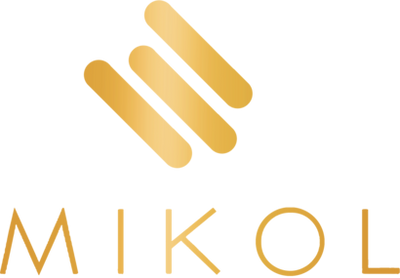- Home
- Shop
- Living
- Blog
- MIKOLITE
- SinterTech
- About
- Gallery
- Sign in
November 05, 2024
With over five billion users on social media, brands are constantly on the lookout for ways to connect with their target audiences, but measuring engagement metrics is integral for understanding the effectiveness of strategies and ultimately driving success.
Engagement metrics show if posts hit home with followers, build brand trust, and boost user actions. In this article, we'll discuss these numbers and share tips on how to boost them. We'll also explore how insights help to improve social media plans, so let's begin!

Social media engagement is about how users react to a brand's posts through likes, shares, comments and clicks. If the engagement rates are high, it signifies that the brand has effectively connected with its intended audience. There are several strategies which brands can implement to increase their social media engagement.
First, getting more followers is key. Brands can achieve this by running giveaways, collaborating with influencers, or investing in growth services. For instance, if you’re trying to make it on TikTok, then partnering with reputable growth services like High Social is key to getting the exposure you need. The best part is that you can grow your TikTok account organically with High Social. This will bring you more followers, making your profile seem trustworthy and authentic.
Second, posting useful and relevant content is important. Brands should create and share posts that resonate with their followers. Content like step-by-step guides, user-generated content, and high-quality, catchy visuals usually get high engagement. Moreover, adding interactive bits like polls or quizzes can make users more eager to get involved.
Replying to comments is also a must. Chatting with fans helps grow a community and builds brand loyalty. Listening to feedback and answering questions shows the brand cares about its audience, building trust and leading to more engagement.
As part of measuring social media success, certain metrics stand out as critical measures of engagement. Engagement rate is a metric determined by dividing the total number of interactions (such as likes, comments, and shares) by either the total follower count or the number of impressions a post receives.
Higher engagement rates suggest people are engaging more frequently, suggesting effective communication and connection.
Reach is another vital metric, measuring the total number of users that have seen your content. Monitoring this metric allows brands to gauge their success in increasing visibility. Broad reach can come from strategically posting times, trending topics, or using relevant hashtags. Brands may also want to track impressions which measure how often content was shown even without interactions occurring immediately afterward.
Clicks are another key metric of engagement; measuring how often users click links within posts can help businesses assess how effective calls-to-action and content strategies are. Brands should track which types of posts drive more clicks so as to utilize that data and refine future posts accordingly.

Brands looking to accurately track and assess engagement metrics on social media can use various social media management tools like Hootsuite, Buffer and Sprout Social. Each of these platforms boasts robust analytics features which provide detailed views into engagement rates, reach and follower growth, helping brands identify trends over time for data-driven decision-making.
Social media analytics such as Facebook Insights, X (Twitter) Analytics and Instagram Insights provide invaluable information regarding post performance, audience demographics and engagement patterns that brands can utilize to adjust their strategies to accommodate changing audience preferences. By regularly reviewing such analytics, they can better meet audience demands.
Competitor analysis of engagement metrics provides vital industry trends and best practices insight, helping brands stay one step ahead with their social media strategies. Tools like Socialbakers and SEMrush give insight into competitors' engagement rates, content types, audience interactions, etc.
Measuring engagement metrics aims to optimize social media strategies for optimal performance. Brands should frequently review their engagement data to ascertain which content types and strategies create maximum engagement. For instance, if video posts receive significantly more likes/shares compared to static photos then increased video output may be worth exploring further.
Altering posting times based on audience activity can further strengthen engagement. By understanding when followers are most active on social media, brands can schedule posts for maximum visibility and interaction. Experimenting with diverse formats, captions, and hashtags gives brands a chance to learn what connects most effectively with their audience.
As social media is an ever-evolving medium, staying abreast of emerging trends and shifting user behaviors is crucial to keeping engagement levels high. Brands must remain adaptable enough to adapt their strategies based on engagement metrics, audience feedback, or industry developments as required to remain viable on these platforms.
Businesses can build meaningful connections with their audiences by understanding engagement, tracking key metrics, using analytics tools, and adapting their strategies as needed. Engagement leads not only to increased brand visibility but also fosters loyalty and conversions. As social media evolves, staying informed on engagement metrics and trends will become ever more critical in order to thrive within this highly competitive environment. By prioritizing engagement strategies for their brands, they can build vibrant online communities which resonate with their target audiences while supporting overall marketing objectives.
Comments will be approved before showing up.
